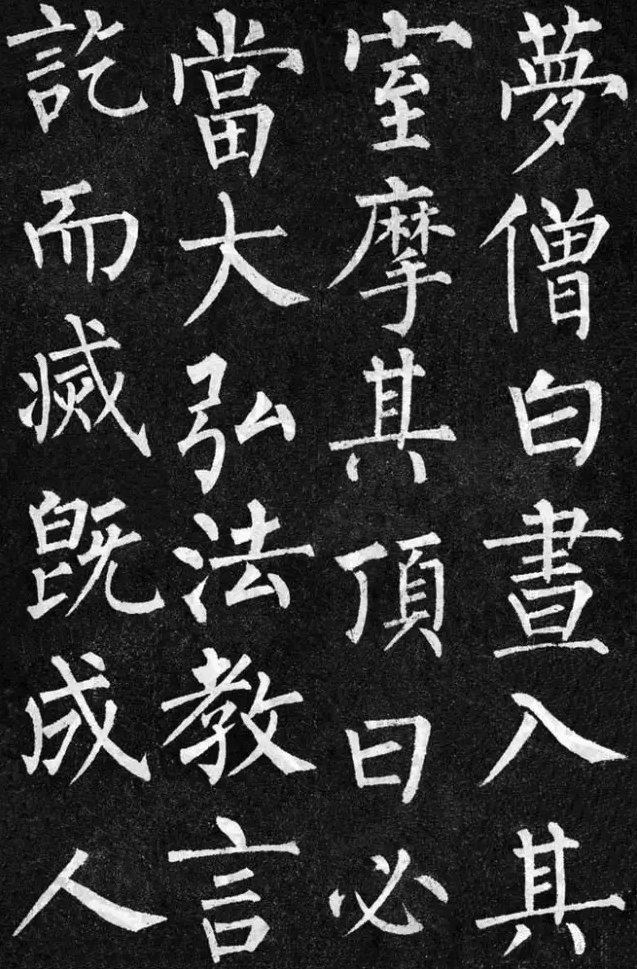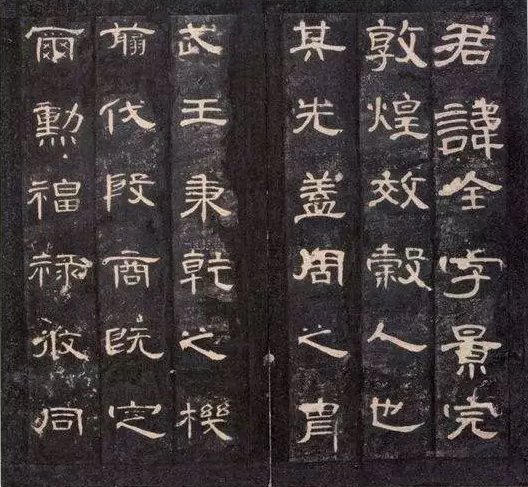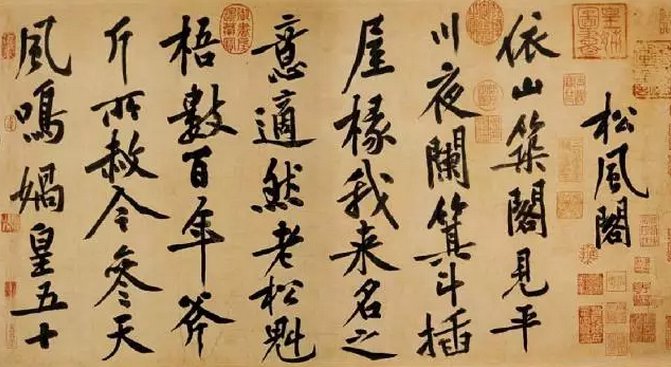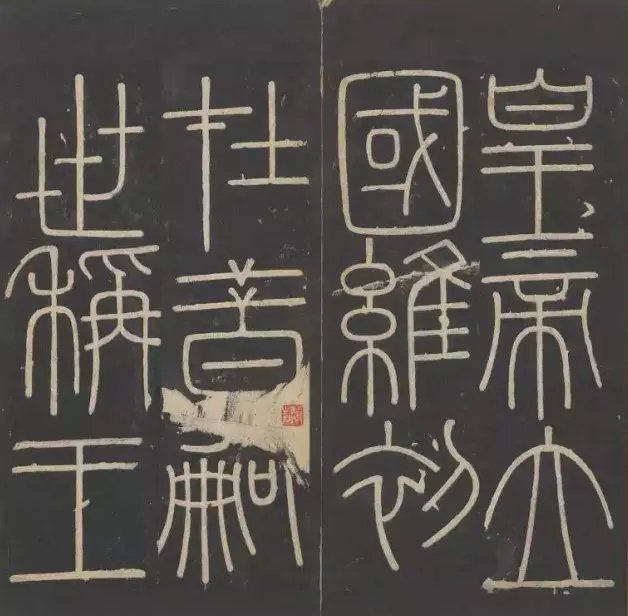(1) Regular script is also called Zhengshu, or Zhenshu. Its characteristics are: square shape and straight strokes, which can be used as a model, hence the name. It began in the Eastern Han Dynasty. There are many famous regular script writers, such as "Ou Ti" (Ouyang Xun), "Yu Ti" (Yu Shinan), "Yan Ti" (Yan Zhenqing), "Liu Ti" (Liu Gongquan), "Zhao Ti" (Zhao Mengfu), etc.

Generally speaking, writing small characters and writing large characters are very different. The principle is: writing large characters must be tight and seamless, while writing small characters must be wide enough. That is to say: when writing large characters, one must be able to be as precise as small characters; while when writing small characters, one must be able to be as cramped as large characters. Therefore, the ancients said, "When writing big characters, you should be like small characters, and when you are writing small characters, you should be like large characters." The focus of writing small characters The combination with the strokes is not much different from the large characters. As for writing, it's slightly different. The writing style of small characters should be round, graceful, straight, and neat; the writing of large characters should be majestic and thick. When writing large characters, use the reverse edge (hidden edge), and when closing the pen, use the returning edge; when writing small characters, it is not necessary to use the reverse edge, and it is better to use the sharp edge, and when closing the pen, it is better to use the pen or lift the pen.
(2) Official script basically evolved from seal script. It mainly changed the round strokes of seal script into square folds, which made the writing speed faster. It is difficult to draw round strokes when writing on wooden slips with lacquer.

Official script is a common solemn font in Chinese characters. The writing effect is slightly wide and flat, with long horizontal strokes and short straight strokes. It pays attention to "silkworm head and swallow tail" and "twists and turns". It originated in the Qin Dynasty and reached its peak in the Eastern Han Dynasty. It is known as "Han Li Tang Kai" in the calligraphy circle. It is also said that official script originated during the Warring States Period.
The structure of official script is flat, neat and delicate. By the time of the Eastern Han Dynasty, pointillisms such as strokes and strokes were transformed into upward strokes, with varying light and heavy pauses, and the beauty of calligraphy art. The styles are also becoming more diverse, which is of great value for artistic appreciation.
(3) Running script is a font between regular script and cursive script. It can be said to be the cursive version of regular script or the regular script version of cursive script. The writing style is not as sloppy as cursive script, nor is it required to be as straight as regular script. Those with more regular script than cursive script are called "Xingkai". Those with more cursive than regular script are called "Xingcao". Running script was produced around the end of the Eastern Han Dynasty.

(4) Seal script is the collective name for large seal script and small seal script. Large seal script, nail bone inscriptions, bronze inscriptions, Zhou inscriptions, and Six Kingdoms inscriptions all preserve the obvious characteristics of ancient hieroglyphics. Small seal script, also known as "Qin seal script", is the common script of the Qin Dynasty. It is a simplified font of large seal script. It is characterized by its even and neat shape, rounded and smooth strokes, and the font is easier to write than Zhenwen.









